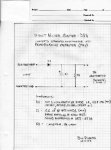fallautumn2
Cadet
- Joined
- Dec 4, 2009
- Messages
- 24
Hi guys,
HELP PLEASE!!!!!!!!
per my earlier post, I ended taking the engine to an authorised Mercury dealer to replace both the stator and trigger after they diagnosed these as being faulty - That cost me $978.
I just got a call this morning and was told that new stator and trigger installed but no power at all was coming out of the switchbox - thus this needs to be replaced and they also said that the coils may need to be replaced as well. I asked if they could bench test the switchbox and coils to tell if they were faulty. they said that mercury don't provide any bench testing equipment to be able to check these components - you have to work from the stator and trigger down replacing any faulty components as you go.
I was very surprised to find that the largest marine engine manufacturer in the world couldn't bench test individual electrical components to determine if they were serviceable or not??
From your experiences is what they told me correct?? I have now been quoted $378 for a new switchbox and advised that the coils would probably need to be changed as well @ $78 each thus another $312. In total another $690 without labour cost.
Just as a recap of the engines recent problems it had developed a crippling problem. When you pushed the throttle down to try and get full speed you only got maybe 1/2 throttle (ie 1/2 speed). If you leave the throttle on full it will, after maybe 10 minutes or more, suddenly surge forward to its correct full speed. I rebuilt the carbs and fuel pump to no avail.
I don't understand how I was getting electrical current to the bottom 2 coils (bottom 2 cyclinders were firing) at least prior to replacing the stator and trigger and now the switch box is completely dead!!!!
HELP please !!!!!!!!!!!!!!!!
HELP PLEASE!!!!!!!!
per my earlier post, I ended taking the engine to an authorised Mercury dealer to replace both the stator and trigger after they diagnosed these as being faulty - That cost me $978.
I just got a call this morning and was told that new stator and trigger installed but no power at all was coming out of the switchbox - thus this needs to be replaced and they also said that the coils may need to be replaced as well. I asked if they could bench test the switchbox and coils to tell if they were faulty. they said that mercury don't provide any bench testing equipment to be able to check these components - you have to work from the stator and trigger down replacing any faulty components as you go.
I was very surprised to find that the largest marine engine manufacturer in the world couldn't bench test individual electrical components to determine if they were serviceable or not??
From your experiences is what they told me correct?? I have now been quoted $378 for a new switchbox and advised that the coils would probably need to be changed as well @ $78 each thus another $312. In total another $690 without labour cost.
Just as a recap of the engines recent problems it had developed a crippling problem. When you pushed the throttle down to try and get full speed you only got maybe 1/2 throttle (ie 1/2 speed). If you leave the throttle on full it will, after maybe 10 minutes or more, suddenly surge forward to its correct full speed. I rebuilt the carbs and fuel pump to no avail.
I don't understand how I was getting electrical current to the bottom 2 coils (bottom 2 cyclinders were firing) at least prior to replacing the stator and trigger and now the switch box is completely dead!!!!
HELP please !!!!!!!!!!!!!!!!




















